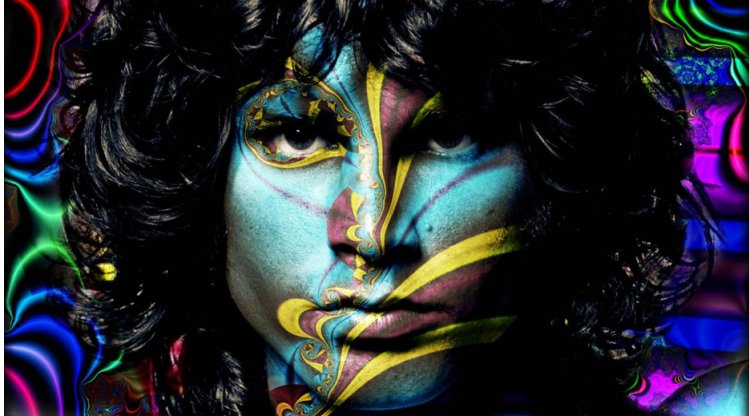Jim Morrison - A Force to Reckon With

Serving as the lead singer of the Doors, Morrison’s incredible voice and poetic lyrics helped define the counterculture music scene of the 1960s.
Because of his father’s military career, Morrison spent his childhood moving around the country frequently. He was born in Florida, but spent his early days in San Diego, then moved to Virginia for third grade, then lived in Texas and New Mexico before starting high school back in California, but heading back to Virginia by the time he finished.
Quite a move!
Like many rock stars, Morrison obtained a few nicknames during his musical career. The most popular one was “The Lizard King,” but there was also “Mr. Mojo Risin” (which came from the song “L.A. Woman” and is an anagram of Morrison’s real name) and “The King of Orgasmic Rock”.
Interestingly, when the Doors were first formed, three of the members- John Densmore, Robby Krieger, and Ray Manzarek bonded over their mutual interest in meditation. Morrison was allegedly the only one who didn’t join in!
The Doors
The Doors’ arrival on the rock scene in 1967 marked not only the start of a string of hit singles and albums that would become stone classics, but also of something much bigger – a new and deeper relationship between creators and audience. Refusing to be mere entertainers, the band sang about dark subjects while other bands revolved about peace and love.
The band was filled with tasteful talent: Morrison’s magical command as the frontman and the keyboard tapestries of Ray Manzarek, the gritty, expressive guitarist Robby Krieger and the dynamic drummer John Densmore.
From baroque art-rock to jazz-infused pop to gutbucket blues, the band’s instrumental triad could navigate any musical territory with aplomb – and all three contributed mightily as songwriters.
The group was born when Morrison and Manzarek who’d met at UCLA’s film school; met again, unexpectedly, on the beach in Venice, CA, during the summer of 1965.
Their eponymous first album, released in January 1967, kicked off with “Break on Through (to the Other Side)” and also featured the chart smash “Light My Fire”, the scorching “Back Door Man” and the visionary masterpiece “The End”. The Doors arrived fully formed, capable of rocking the pop charts and the avant-garde with one staggering disc. Before ’67 was over, they’d issued the ambitious follow-up Strange Days, with such gems as “Love Me Two Times”, “People Are Strange” and “When the Music’s Over”.
Next came 1968’s Waiting for the Sun, boasting “Hello, I Love You”, “Love Street” and “Five to One”. Over the next few years they minded over new territory on such albums as 1969’s The Soft Parade (featuring “Touch Me” and “Tell All the People”), 1970’s Morrison Hotel (which includes “Roadhouse Blues”, “Peace Frog” and “Queen of the Highway”) and 1971’s L.A. Woman (boasting “Rider’s on the Storm”, “Love Her Madly” and the title track).
They released six studio albums in all, as well as a live album and a compilation, before Morrison’s death in 1971. Their electrifying achievements in the studio and onstage were unmatched in the of rock genre.
Manzarek, Krieger and Densmore collaborated on two more original Doors albums, Other Voices and Full Circle, and a set of tracks they composed to accompany Morrison’s 1969 recording of his poetry, released in 1978 as An American Prayer. They also pursued individual music projects, books, theatrical productions and other enterprises.
The Doors were inducted into the Rock & Roll Hall Of Fame in 1993.
His Disturbed Relationship with Nico
As Max Bell of Louder tells, Jim Morrison spent much of 1967's "Summer of Love" in New York City, where he met more than his match in the form of Nico. Morrison fell for the iconic Velvet Underground collaborator as soon he laid eyes on her, and she returned his affections.
The slight Morrison and the statuesque Nico made for an impressive, peculiar couple. They made music together and all was well ... for roughly a month. See, Morrison actually already had a girlfriend, Pamela Courson, who struck back with a high-profile affair of her own. When Morrison learned of this, he dropped New York on the spot and drove back to Los Angeles, without even bothering to wake Nico up. Understandably, she wasn't particularly happy about this.
Of course, even without the fact that Jim Morrison was pretty much two-timing all along, it could be argued that the two didn't exactly have the healthiest relationship.
According to the book Nico: The Life and Lies of an Icon, their daily routine involved a considerable amount of drink and drugs, and consisted of an ever-repeating circle of "affection-argument-rancor-resolution." The fights often became physical, and though Nico says she would happily have married the man she has called her first love, he was never particularly interested.
Controversies that followed him everywhere
It took the Doors’ drummer, John Densmore, three years to visit the grave of his bandmate Jim Morrison after he was found dead in a Paris bathtub in 1971. He didn’t even go to the funeral. “Did I hate Jim?” Densmore pauses, although he is not obviously alarmed by the question. “No. I hated his self-destruction … He was a kamikaze who went out at 27 – what can I say?”
Quite a lot, it transpires. Morrison was a man who was spectacularly good at being a rock star – a lithe figure in leather trousers, prophesying about death, sex and magic on some of the biggest hits of the 1960s – Light My Fire, Break on Through and Hello, I Love You. But he was catastrophically bad at the rest of life. Like many alcoholics, he could be reckless, selfish and mercurial.
The Doors were banned from The Ed Sullivan Show in 1967 after Jim broke his agreement with the show’s producers, who were feeling nervous about drug references in a song’s lyrics. Morrison said before the live performance that he wouldn’t sing the words, “girl, we couldn’t get much higher” from “Light My Fire” but he did anyway.
Other well-documented incidents include Morrison being arrested and charged with public drunkenness after harassing a security guard at a Las Vegas adult movie theatre in 1968. Morrison taunted the security guard in the parking lot by pretending to smoke a joint, resulting in a fight. The police arrived and arrested Morrison and charged him with vagrancy, public drunkenness, and failure to possess sufficient identification.
Later in the year on the band’s first European tour, The Doors were forced to perform as a trio at a concert in Amsterdam after the singer collapsed while dancing during Jefferson Airplane’s performance that were on the same bill.
The March 1969 Incident
The Lizard King had exposed himself onstage, which, along with some public profanity and the obligatory-to-Morrison public drunkenness was more than enough to stir the pot big time. According to Ultimate Classic Rock, Morrison turned himself in a month after the fact, and he was actually found guilty of public profanity and exposure. Whether this would actually have caused the vocalist to see the inside of a State Penitentiary or not, we'll never know, because Morrison died before his appeal. The whole, unfortunate incident was finally put to rest in 2010, when Florida's clemency board and Governor Charlie Crist posthumously pardoned Jim Morrison.
Morrison had developed a severe alcohol and drug dependency, which culminated in his untimely death. In March 1971, to get away from the court cases, Morrison flew with his girlfriend to Paris where they took up residence in the city in a rented apartment on the Rue Beautreillis (on the Right Bank).
Morrison died on July 3, 1971, at age 27. In the official account of his death, he was found in a Paris apartment bathtub by his girlfriend Pam Courson. Pursuant to French law, no autopsy was performed because the medical examiner stated that there was no evidence of foul play. The absence of an official autopsy has left many questions regarding Morrison’s cause of death.
He was unpredictable, eclectic and amusing and so was his music and let’s now part with the lyrics of this musical genius:
“If only I could feel me pulling back again and feel embraced by reality again
I would die
Gladly die”















































